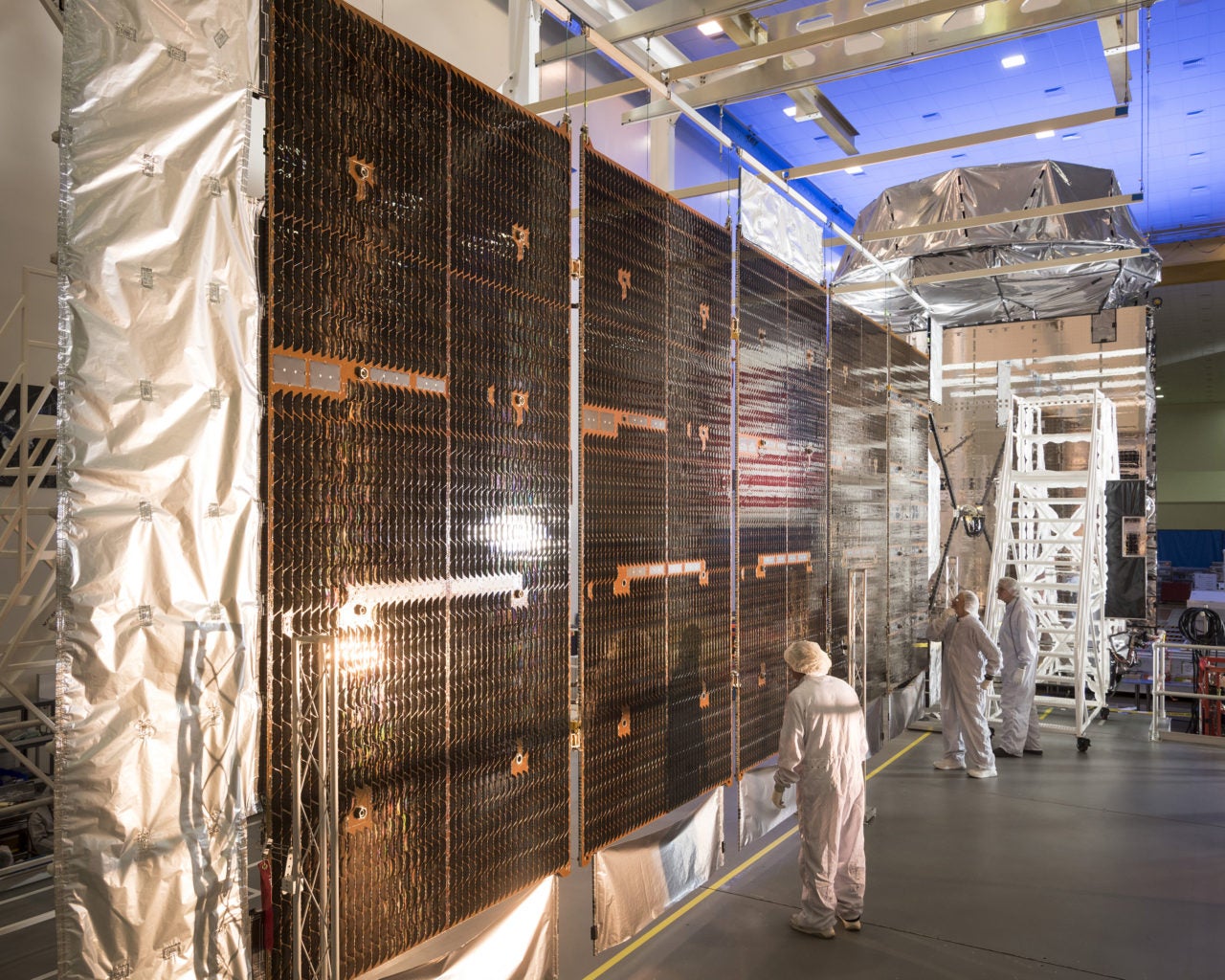Latest News

MUOS SV 3 (MUOS 5) final SAWA installation at Lockheed’s satellite manufacturing facility. Photo: Lockheed Martin.
The U.S. Navy’s Communications Satellite Program Office, PMW 146, and Lockheed Martin handed over full operational control of the fifth Mobile User Objective System (MUOS) satellite to the Naval Satellite Operations Center (NAVSOC). The milestone follows the successful completion of the MUOS 5 satellite’s on-orbit testing and delivery of all operational products needed to fly the satellite.
In April, the Navy, working with Army Forces Strategic Command (ARSTRAT), configured one of MUOS 5’s two communications payloads — its legacy Ultra High Frequency (UHF) payload — for testing. The handover of this satellite to NAVSOC clears the final hurdle allowing for ARSTRAT to provide the payload’s final configurations to support the Navy’s legacy UHF satellite communications mission.
Eventually, legacy narrowband UHF communications will transition to next generation Wideband Code Division Multiple Access (WCDMA) capabilities, the U.S. Navy said. To facilitate that transition, all five on-orbit MUOS satellites were intentionally designed with two communications payloads to support both legacy UHF and WCDMA.
Early combatant commander testing of the on-orbit WCDMA payloads began in July 2016. According to the Navy, the new MUOS capabilities will revolutionize communications for mobile forces with simultaneous voice, video and mission data over a secure high-speed Internet Protocol (IP)-based system. Users with new MUOS terminals will be able to seamlessly connect Beyond Line-of-Sight (BLOS) around the world and into the Global Information Grid, as well as into the Defense Switched Network, as part of the Navy’s worldwide cellular network.
Once fully operational, the MUOS network of five on-orbit satellites and four relay ground stations will provide more than 10 times the communications capacity of the legacy UHF satellite system. MUOS’ network already provides near-global coverage, including communications into polar regions. MUOS also has demonstrated successful communication of Integrated Broadcast Service (IBS) messages.
Today there are more than 55,000 radio terminals currently fielded that can be upgraded to be MUOS-compatible, with many of them requiring just a software upgrade, according to the Navy.
Get the latest Via Satellite news!
Subscribe Now